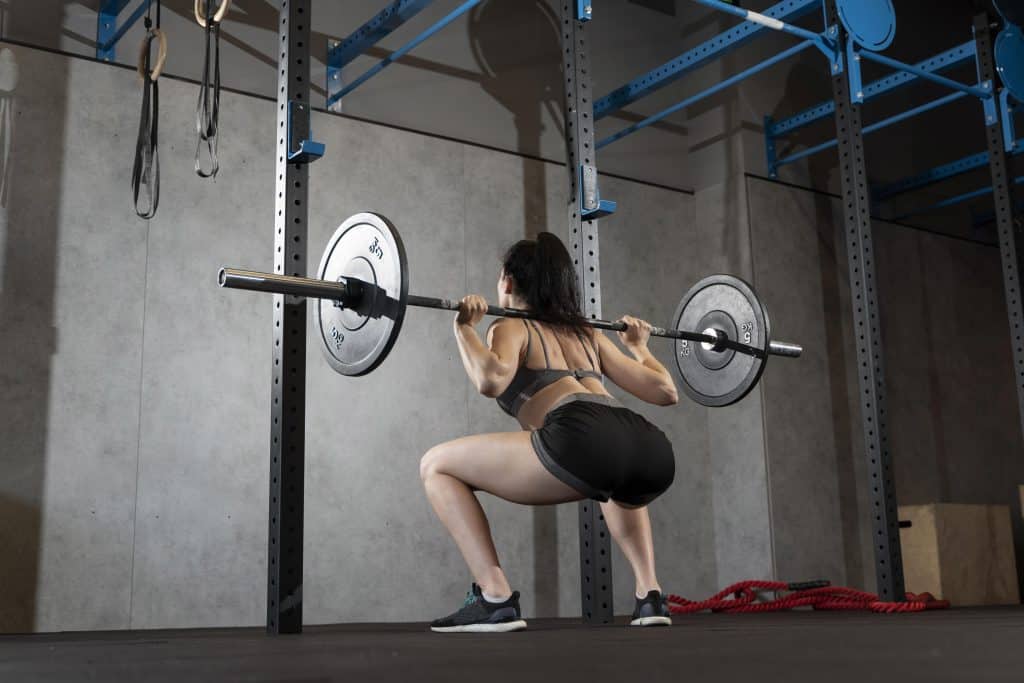12 de July de 2024
VBT and Exercise Selection… Which Exercises are The BEST to Use?
If you are a coach, athlete or even every day gym goer, wouldn’t it be nice to consistently track your progress? Of course it would be. You wouldn’t be here reading this if you weren’t keen to the idea of consistently tracking your training progress. However, the key word here is consistency. What good is attempting to measure improvement in each training session, week or month (even year) if you cannot be positive that what you are measuring is being done in a valid way? By definition, validity implies that something has been executed in compliance with law, but in a training sense, we can think of this as something that is executed in compliance with a set protocol. This way, the data we are collecting is in fact valid. When it comes to velocity based training, there is a certain way in which we need to go about utilizing technology, like Vitruve, to best ensure validity of data collection.

Establishing protocol is a big step here, but selecting the right exercises that can be measured properly using this technology is a huge part of this as well. Which exercises are best to use when it comes to ascertaining valid training data? Let’s talk about it!

Velocity Based Training… a Key Distinction
With all of this being said, we must remember this key distinction. Velocity based training isn’t ONLY the idea of lifting fast. It is not its own training method. Velocity based training is a way (a very helpful way I might add) to measure outputs, speeds and help determine the most effective loading for the outcomes we are looking to achieve. Whether it is conventional, heavier strength training OR other varying loads moved at various speeds, velocity based training technology is paramount in measuring every rep of our training to further zoom in on precision of loading.
In fact, velocity based training can even be beneficial for things like training hypertrophy… we must expand how we think about VBT if we are to benefit from using it! At our facility, our athletes use this technology on every rep of every set of each main lifting movement we do!

Standard Exercises that Work Well with VBT Technology
To start out, I want to talk about the value of using velocity based training with the quintessential barbell movements we all know and love. Think of things like:
- Barbell Deadlifts
- Barbell Bench Press
- Barbell Back or Front Squats
- Trap Bar Deadlifts
Each of these movements are able to be done with repeatable ranges of motion, consistent or highly consistent bar paths and we can load them maximally. This isn’t to say other exercises cannot be done with VBT technology, but these are most definitely the most ideal when it comes to the consistency we seek to achieve the validity that is so important for data collection.
Even with this said, here are some recommendations I can make to ensure you are collecting the most accurate data. When performing barbell lifts, you want to utilize consistent mechanics to the best of your ability. For example, the same width of your feet on a trap bar or barbell deadlift. If you are using a box for a squat, use one that is the same height every time you squat. Aim to lift without shoes or sneakers so you can guarantee the same relationship with the ground.
When performing a barbell bench press, are your hands at the same distance apart on the bar? Are you instructing athletes to keep their backside connected to the bench and to have their feet in the same place on the floor? You cannot ignore these details. You must be cognizant of them and strive to make them as repeatable as possible.
Lastly, the reason these exercises are the best to use is because you can easily ascertain a maximal load with them. It is easier to ensure the same range of motion when finding a maximal load and finding this maximal load is a far easier way to utilize this VBT technology. This is due to the fact that the Vitruve system does calculate range of motion and factors this in with loading being used to more accurately give bar speed feedback of each rep AND estimates one rep maxes.
Overall, it is highly recommended to use the same main 2-3 movements when you are utilizing VBT technology. Remember, you are better off having 2-3 highly reliable and valid data collectors vs. 8-10 variations that you cannot trust and rely on fully.

The Challenge of Using Unilateral Exercises with Free Weights
What about exercises that are a bit more challenging to use consistently and that do not guarantee or closely guarantee validity? Believe me, we do utilize free weight exercises a bit with our Vitruve units, but they are definitely a step back from barbell exercises done bilaterally and there are things you must consider.
Let me say this first. Unilateral upper body exercises done with dumbbells, let’s say, are far more reliable than lower body exercises. You can have your back fixed to a bench on a single arm dumbbell bench press and you can have your torso fixed to a bench (facing prone) if you were to do a dynamic barbell row. Having yourself fixed to a bench is one good way to ensure consistency if using a free weight exercise.
However, this can get a bit dicey with lower body movements and we will only dabble in these lower body movements with athletes who are advanced and can be accountable for the repeatability of their mechanics. Even then, you have to understand that these are a step back from how consistent bilateral barbell exercises are. How much of the back leg is involved when doing a split squat? What about a split or “B stance,” RDL variation? If you are doing a Hatfield squat, can you guarantee your upper body is doing the same amount of assisting with each rep? Frankly, you can use something like a smith machine where the load is more fixed to help with the consistency of the measurements of each repetition.
Beyond this, there are certain measures you can take. For example, you can elevate the back leg on a single leg variation to try to further ensure consistency in terms of its use in the movement. Yes, this is NOT perfect, but it can help a bit in terms of consistency. You can ALSO use a pad on the floor under your knee and only count reps if the knee touches that pad. This can be one way to slightly improve the consistency of the distance of the range of motion with each rep.
If you are going to use these methods, you do have to consider certain drawbacks. Athletes can overcompensate to maintain speed of a rep. If you do not have a good coaching eye or advanced athlete who can remain more consistent with mechanics, you will be collecting extremely unreliable data and wasting your time. If you can take precaution to increase consistency and do a good job of holding these standards, it COULD have benefits.
What about more specifics on using dumbbells and kettlebells? Personally, I would NOT use our Vitruve for say, a kettlebell swing. I find it very hard to ensure the repeatability of each rep from a mechanical and range of motion stand point and if I cannot rely on that, I have no use in doing so.
Also, please remember that when using dumbbells on a single arm exercise, you would only enter the load of one dumbbell. However, when holding dumbbells for a single leg exercise (such as a bulgarian or rear leg elevated split squat) you must account for the weight of both dumbbells. This is due to the fact that we are not fixed to a bench and we need to create force to move the weight of BOTH dumbbells as we drive into the ground to perform the movement.

My Final Take
Overall, you would be hard pressed to find exercises more reliable than the classic barbell bilateral variations when you are utilizing a system like Vitruve to gather and collect data regarding your training. Can you explore and venture out into other variations like unilateral variations? You could. However, you should be an experienced coach who can better guarantee consistency of what is being performed and it would be better served with an advanced athlete who is in tune with maintaining the integrity of the repetitions being performed.

